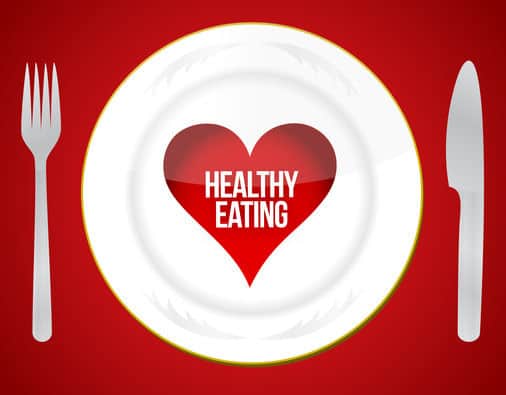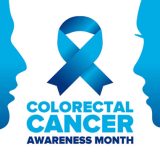

My father is the king of the malapropism. If there is a metaphor to be mangled he is just the rhetorical chainsaw for the job. One quip which he commonly used or, more accurately, abused when we were kids, was aimed at scolding my brothers and me for putting more food on our plates than we could eat. He would look at me and snarl, “Your eyes are bigger than your head,” meaning, “Your eyes are too big for your stomach.” Of course this was counter-productive because, in the effort to suppress my laughter (and avoid a slap in the head), I usually ended up with mashed potatoes up my nose or choking on my peas, which further dampened my appetite. In his defense, I am sure it was frustrating for him to watch food go to waste while struggling to feed a family of eight.
What he was trying to tell us, in his Ralph Cramden-esque way, was that we should pay more attention to how we choose our food portions. And, though am I loathe to admit it, this has become a mantra of mine as the years have gone by and I have grown in my role as a weight-loss and nutrition counselor. So yes, much to my chagrin, I admit that in this regard I am becoming my father, albeit for different reasons.
I focus on portion size because it is a key component to the success or failure of any weight-management program. The only way to successfully lose or maintain a healthy weight is to take in equal or fewer calories each day than your body burns. This means you have to know how much you can eat of what at every meal or snack, which is why most diet plans have a system for counting calories. Here’s the problem with these methods: people don’t live that way and rarely, if ever, continue following these plans once they have reached their goal (hopefully) and gone back to normal life.
Invariably, people using these consumption-control methods end up regaining the weight and running back into the welcoming arms of their name-brand weight-loss counselor for another expensive round of costly prepared foods, meetings and calculator-supervised meals. Cha-ching. Hmm.
In order to manage weight successfully people must be able to create a lifestyle that allows them to choose their foods and portions without having to think too deeply about it. Any system that requires mathematical formulae to achieve this result undermines the lifestyle. So what to do? As Grandma Roy would say, “Use the little bit of sense the good lord gave you and. . .blah, blah, blah.” Here’s some common sense advice to guide you in managing the “what” and “how much” of a healthy nutritional lifestyle.
What You See Is What You Get
The truth about weight management is that what you eat is more important than how much. But that is fodder for another article so let’s leave it at this: portions of food should be chosen from the three macronutrient groups – proteins, fats, and carbohydrates. Since they all have different shapes, densities and glycemic values, creating portion sizes can be complicated. Assuming you don’t want to live your life strapped to a kitchen scale and measuring cups, use the method that most experienced nutrition people recommend when choosing their serving size…eyeball it.
The eyeball method consists of two parts: choosing what to put on your plate and how much of each.
- For choosing what to put on your plate you should first visually draw a line through the middle of your plate. Draw a perpendicular line through the middle of one of the halves. This gives you a plate divided into three sections, one big and two smaller. The big section is for non-starchy vegetables (string beans, green leafs, broccoli, etc.), salad and fruit. One smaller section is for proteins (meats, poultry, soy, etc) and the other is for starchy carbohydrates (grains, potatoes, rice, beans). One serving goes in each section.
- How much of each type to serve is very individual – a 240-pound man has a different portion size than a 110-pound woman. Use your hand to help you choose your serving size. Here’s how:
- Protein – the size of your palm, minus the fingers is your portion size. No stacking.
- Veggies – cup your hand. What would fit in your cupped hand (educated guess here, don’t spoon baked beans into your hand) is your serving.
- Starchy carbs – use either the size of your fist or a cupped palm. Ex.: baked or mashed potato – fist; rice or beans – cupped palm.
For those of you wondering about fats, the general rule here is that fats will come in the form of the oils you cook with or in the salad. In addition, most protein sources have a certain amount of fat in them so, between the two sources, your fat serving should be covered.
And that’s it. Pretty simple. And after using a few times it becomes second nature. It is not precise but it doesn’t need to be. If you follow this method you will keep your daily caloric load in your ballpark for weight-control.
Here are some other ideas I found that might be helpful in your serving management efforts:
- A deck of cards equals about 3 ounces of protein.
- 1/2 cup of pasta, beans or dry cereal is the size of a hockey puck.
- A serving of fresh fruit (1/2 cup) is about the size of a baseball.
- A serving of butter is about the size of 1 die (as in 1 of a pair if dice).
- Don’t eat out of the box or bag. Put your snack/treat in a small bowl or plate.
- Take it slow and enjoy your food. You will feel satisfied sooner.
- Plate your food in the kitchen and bring it to the table to discourage second helpings.
Portion Control Tips for Dining Out
Whether you are in a restaurant, a deli, or a fast food joint you will need some strategies to avoid the enormous number of extra calories that you can take in when eating out. Try these and come up with a few of your own to avoid caloric overload:
- Cut your meal in half when it is served and ask for a “doggie bag” at the start of the meal.
- Ask for a lunch portion.
- Share an entrée with a friend.
- Order from the appetizer and salad menus and skip the entrée.
- Never super size.
- Avoid all-you-can-eat buffets.
- If you must have dessert, share it with someone.
All of these recommendations are very doable and, after trying once or twice, will become second nature to you. So I leave you to it. I’ve done my bit to shrink the eyes of the world back to normal size. It’s up to you to make the right choices. And in the words of my oft incomprehensible father, “If I have to tell you again…I won’t.”




